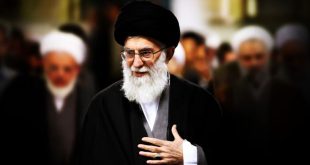Since the turn of the twentieth century, the main biographical sources and studies dealing with the life and thought of Muḥammad Amīn al-Astarabādī (d. 1036/1626-7) have upheld the view that he underwent some form of “con- version” from a mujtahid to an akhbārī (“traditionist”) after moving to Mecca, being commanded by Mīrzā Muḥammad al-Astarabādī (d. 1028/1619), known as ṣāḥib al-rijāl, to revive “al-ṭarīqa al-akhbāriyya” (“the traditionist way or method”).
The prevalent view that Muḥammad Amīn al-Astarabādī (d. 1036/1626-7) studied with a prominent uṣūlī (rationalist) jurist, namely, Shaykh Ḥasan Ṣāḥib al-Maʿālim (d. 1011/1602), the son of al-Shahīd al-Thānī (d. 965/1558), and that he was a mujtahid for most of his life before he converted to akhbārism (traditionism) in Mecca, is largely unfounded. This view surfaced during the late nineteenth century, through Muḥammad Bāqir al-Khāwnsārī’s Rawḍāt al-Jannāt, and was uncritically integrated into the major bio-bibliographical accounts on al-Astarabādī’s life and scholarship afterwards. Many modern scholars in turn adopted this view, producing inadequate conclusions about the nature of his akhbārī movement. Based on a close assessment of al-Astarabādī’s extant works and his references to his teachers and places where he studied, Shiraz rather than Mecca was decisive in shaping his early traditionist stance in Shīʿa kalām (rational theology), which resonated with his traditionist positions in jurisprudence and ḥadīth. As far as one can tell through his ijāzās (scholarly licenses), he sought to transmit ḥadīth from one mujtahid, namely, Shaykh Muḥammad Ṣāḥib al-Madārik (d. 1009/1600), but did not receive training in ijtihād (rational legal inference) with him. He appears to have been well-versed in the methods used by ūṣūlī jurists to evaluate ḥadīth and derive the law, prior to that time, through his studies in Shiraz. All these findings, lead us to question the background and nature of his akhbārī thought as they were presented in much of the secondary literature, and to bring attention to a distinct set of intellectual and sociopolitical forces that shaped it.
Bibliographic Information
Title: Was Muḥammad Amīn al-Astarabādī (d. 1036/1626-7) a Mujtahid?
Author(s): Abisaab, Rula Jurdi
Published in: Shii Studies Review
Language: English
Length: 39 pages
 Ijtihad Network Being Wise and Faithful Muslim in the Contemporary World
Ijtihad Network Being Wise and Faithful Muslim in the Contemporary World

